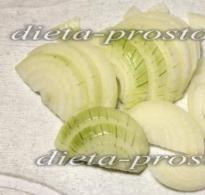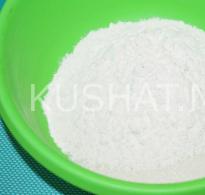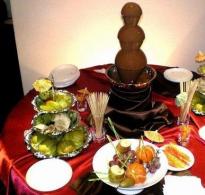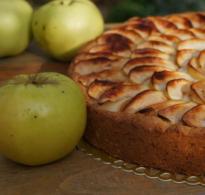What is garam masala made of? What is garam masala spice, what is its composition and application
In this review, we will talk about Garam Masala spice - we will tell you what it is, what it consists of and what properties it has. We will discuss the indications and contraindications that are characteristic of her, let's talk about the application and analogues. Our article contains complete information about the spice - read, study and discover new culinary horizons.
What is this?
Let's start our review by answering the question, what is it. Garam masala is a traditional Indian blend of several spices that give a pleasant spicy taste and intoxicating aroma. Contrary to misconceptions, the mixture will not be spicy, this phrase is translated from Hindi as “warm spice”. Hindus believe in the effect of spices, according to Ayurveda, they can have a warming and cooling effect - this mixture is included in the first group.
On the territory of India, especially in its northern part, the spice is extremely common - it is used daily for food. Its popularity reaches unprecedented heights - this is evidenced by the use of almost every Indian family.
Some general information:
We learned what the Indian seasoning Garam masala is - the composition of this additive is original and subtle, we will discuss which compounds make it possible to achieve a characteristic taste and aroma.
seasoning composition
The composition of Garam Masala spices is quite complicated - it can include up to thirty ingredients (depending on the region of preparation). We have compiled a list of the main elements that make up the mixture of Garam Masala spices:
- Black pepper;
- Nutmeg;

Each chef who prepares the spice has his own recipe with well-balanced proportions - certain ingredients can be added or removed during the cooking process. Often, the composition of the proportion of Garam masala additionally includes:
- Turmeric;
- Chilli;
- Bay leaf;
- Fennel.
The elements depend on the desire, imagination and capabilities of the cook or manufacturer. Now you know the composition of Garam masala seasoning - almost all ingredients are available in stores or markets.
In what proportions to mix different spices? We will talk about this below - and we will also give both a recipe for creating a mixture in our own kitchen, and recipes for dishes where this seasoning is used. In the meantime, let's talk about the beneficial properties that the Indian spice Garam masala has.
Beneficial features
It is quite difficult to single out all the advantages of using spices - each component has a huge list of advantages. We note the main positive effects on the body:
- Antimicrobial;
- Anti-inflammatory;
- Antidiabetic;
- Antioxidant.
Separately, it is worth talking about such advantages:
- Improvement of digestive processes. Spices improve peristalsis, accelerate digestion, increase the production of saliva and gastric juice;
- Protection against the formation of malignant neoplasms. The consumption of spices increases the production of detoxification enzymes.

An important question that worries many is whether seasoning affects the process of losing weight?
- The product is thermogenic - accelerating metabolism allows you to quickly get rid of excess calories;
- At the same time, the combination of elements increases appetite - the effect can be completely opposite.
Unfortunately, Garam Masala has not only useful properties - if used excessively, it can be harmful and has contraindications for use. Let's take a closer look at the cons of using in cooking.
Contraindications
Excessive use of any spice is fraught with complications - you should always observe moderation when cooking.

Who shouldn't eat spice mix?
- Pregnant and lactating women;
- Small children;
- Persons with acute diseases of the cardiovascular and digestive systems;
- People suffering from allergic reactions.
Make sure you are not allergic to any of the ingredients - even a small amount can adversely affect your health.
And now let's talk about the pleasant - consider the use of Garam masala seasoning.
Use in cooking
Please note - you need to add seasoning before the end of cooking. Long heat treatment harms the taste properties - the food may begin to taste bitter.
The possibilities for use are very wide - here are the most common types of dishes:
- For roasting vegetables;
- When cooking rice;
- With potatoes and meat;
- For Korean cuisine;
- Suitable for lamb, pork, chicken;
- Excellent addition to pickles and marinades;
- For piquancy, you can put in soup;
- Often used spices for Masala Chai - a tonic warm drink.

Recipes
Have you chosen your spice mix yet? We will tell you what to do to make your own seasoning:
- Fry whole seeds in a heavy-bottomed pan until a characteristic spicy aroma appears;
- Cool them down;
- Pour into a coffee grinder or blender and grind to a state of flour;
- Pour the mixture into a dry container with an airtight lid and store in a dark place.
Shelf life - about three months, after this period, the seasoning begins to lose flavor.
As a bonus, we will tell you about the recipe and composition of the spices of Garam masala tea:
- Take the prepared mixture;
- Add lemongrass and basil if desired;
- Pour two cups of milk and two cups of water into a saucepan;
- Bring to a boil and pour in the mixture;
- Stirring, keep on low heat for about five minutes;
- Strain the liquid through a sieve.

What to replace?
Finally, we note alternative options that will allow you to get the usual taste if it is not possible to purchase a ready-made mixture or make your own seasoning:
- Use not one hundred percent analogue, but yellow powder allows you to give dishes a rich taste, characteristic of India itself;

- Mix cumin and allspice black pepper - the ingredients will remind you of the classic Garam Masala recipe.

Now you know everything about Garam masala - recipes, description, useful properties and much more. Purchase or make your own mix and add vibrant colors of India to your favorite dishes.
Not only in India they know what Garam Masala is. The combination of these two words is well understood by residents of many South Asian countries.
Unique Blend
Asian dishes are always distinguished by excellent taste and excellent aroma. In most cases, this result can be achieved through the use of various seasonings. Among them, Garam Masala occupies a special place. It is with it that most of the dishes of North Indian cuisine are prepared. The peculiarity of this unique aromatic additive lies in its very name. In Hindi, "garam" means "sharpness" and "masala" means "mixture". The sharpness here refers to the richness of taste, so "Garam Masala" is most likely a "rich mixture."
Indeed, the famous Indian seasoning can decorate almost any dish. It is used to prepare appetizers, soups, salads, various sauces and stews. The uniqueness of "Harem masala" is that it can equally well be an excellent addition to literally any product: meat, vegetables, rice or fruits. It is often used in baking cakes and muffins, as well as to flavor various herbal teas, fruit drinks or juices.
Unity of taste and aroma
There is no unified recipe for Garam Masala. The composition of the mixture may vary and, as a rule, depends on the region in which this or that culinary specialist creates. However, some components must be present. Among them: nutmeg, cardamom, cloves and black pepper. Sometimes star anise, cumin, white pepper, anise, bay leaf, turmeric, coriander or fennel are added to them, and sometimes even onions and garlic. It all depends on what kind of dish the mixture is selected for.

There are times when the seasoning must have a liquid consistency. Then ordinary water, coconut milk or vinegar is added to the mixture. There are hundreds of ways to prepare Garam Masala. The composition of some of them in families is passed down from generation to generation from mother to daughter. Each hostess prepares such a seasoning in her own way. Perhaps that is why in India it is impossible to meet the same dish with the same taste. Every woman sacredly keeps the recipe and is very proud of her secret.
DIY
Any hostess at home can cook Garam Masala herself. The seasoning recipe provides for the following products:
one tablespoon of black peppercorns, as well as cumin and cardamom seeds, a couple of tablespoons of coriander seeds and ground turmeric, one teaspoon of mustard seeds and fennel seeds, half a teaspoon of cloves, two bay leaves, the same number of clove sticks and a couple chilli pods without seeds.

Preparing such a mixture is very simple:
- Place a clean, dry skillet on the fire.
- Pour on it all the components except for the powders.
- Heat over low heat until a characteristic aroma is felt. This will usually take 2-3 minutes.
- Pour the mixture into a coffee grinder and turn into a homogeneous powder.
- Add turmeric and mix again.
It turns out a real Indian "Garam Masala". Its composition is easy to change when it comes to a particular dish or product. Seasoning can be used immediately after cooking or put it in a glass jar and leave for storage, but not more than a month.
Application area
Few people know that Garam Masala spices are used not only in cooking. If you look closely, you will notice that the unique seasoning contains components that have medicinal properties. For example, by adding a pinch of this fragrant powder to tea, you can get an excellent remedy for treating colds and various respiratory diseases. In this case, not only the warming effect is triggered, but also the ability to destroy pathogens.

In addition, the Indian mixture can cleanse the human body of toxins and toxins accumulated in it. Particular attention should be paid to the magic seasoning for those who suffer from diseases of the gastrointestinal tract. Periodically adding very few of these spices to food, you can defeat the disease at its first stage or conduct good prevention sessions. In more serious cases, medical intervention will naturally be required.
Garam masala is a legendary Indian spice mix, the Hindi name translates as "hot mix". Like all spices, and especially loved in Asian cuisine. However, the fashion for oriental cuisines is widespread today, so garam masala can be found among French, Russian, and American housewives.
The spices that must be included in the garam masala mixture are: black pepper, cloves, brown and green cardamom, nutmeg, turmeric, cumin and cinnamon. The rest of the ingredients can be added at the discretion of the cook, and in India they prefer not to buy this seasoning, but to cook it without fail.
It is advisable for garam masala to take not ground spices, but whole ones, and fry them over low heat in a pan with a thick bottom, stirring constantly, like seeds, for about ten minutes. As soon as a breathtaking aroma has gone from the spices, and their color has turned brown, the fire must be turned off, the spices should be cooled and ground in a coffee grinder.
Homemade garam masala is used immediately, and the leftovers are stored in glass jars with lids, but not longer than 3 months. Sometimes spices are toasted with a little bit of coconut milk or vinegar (makes a paste), garlic, ginger, anise, and chili peppers (makes a spicier mixture). There is no single recipe for garam masala: all variations have an equal right to exist. Today, this seasoning is widely used in cooking. Garam masala goes well with plov and poultry dishes.
What is garam masala seasoning? Garam masala—not a spicy seasoning. "Garam" means "hot", and "masala" - "a mixture of spices." “Hot” and “spicy” are rather Ayurvedic concepts, where it is believed that plants and herbs can have both “warming” and “cooling” properties of the body.
This seasoning is especially common in northern India. It is added mainly at the final stage of cooking, after the fire has already been turned off. Some one garam masala recipe No. Every Indian chef who uses seasoning garam masala, have your own. Some recipes include up to 20 different ingredients.
Chef: Rick Stein
Garam masala composition
- 1 st. l. black pepper
- 2 tbsp. l. cumin seed (zira)
- 2 tbsp. l. coriander seed
- 2 tsp cardamom seeds
- 4 tsp clove buds
- 1 cinnamon stick in 7cm
- 1 nutmeg
- grater
- pan
- coffee grinder or food processor
Cooking method:
- Fry all spices except nutmeg in a skillet (without oil) over medium heat for a few minutes until fragrant.
- Cool down.
- Grate nutmeg on a fine grater, add to the roasted spices.
- Grind to powder in a coffee grinder or food processor.
- Store in a closed container away from sunlight for no more than one month.
Seasoning garam masala. Recipe by British chef and restaurateur Rick Stein
What is in Garam Masala?
Regardless of how many and how many spices you choose (if you want to create your own garam masala recipe), it must have black pepper, which “warms” the body. But never chili or turmeric can be included in garam masala. (How glad I was to read this. The first time I made this seasoning, I didn’t like it at all because of the color. As a fan of experiments, I immediately wanted to add turmeric for brightness. But, fortunately, I found out that this could not be done. )

Next Component spices garam masala- . It is easy to catch the aroma of lemon and eucalyptus in its seeds. Which of these two smells will dominate depends on the country where the plant grows.

Cardamom goes very well in dishes with coriander seeds. Both spices are united by the lemon component in the smell. Perhaps this relationship determined their proximity in garam masala recipe.

Cinnamon is the rolled bark of the cinnamon tree. This is the only spice that I buy not only in its whole, but also ground form, since at home it is not always possible to grind it to a powder state.

In Indian cuisine in general, cloves are often used in rice and meat dishes. You need to be very careful when using it in ground form, as its tart aroma can easily “drown out” all the others.

Before adding grated nutmeg to seasoning garam masala be sure to check its suitability. How to do it? After cutting the nut in half with a knife, it should be oily and moist. If, when cut, the nut crumbles, and inside it is dry, then this is an old nut, whose best time is long behind.

Cumin (zira) is one of the main components of garam masala. Cumin, like black pepper, is a "warming" spice.

Basic cooking principle spices garam masala is as follows: fry spices (without adding oil), cool, grind into powder. I do not recommend buying this or any other pre-made spice mix. Firstly, the purchased version is almost always a miserable semblance of freshly made, since spices do not retain their aroma for a long time when ground.
Secondly, when they are roasted, they really “open” their aroma, spreading it in the kitchen and throughout the house. Especially in winter, the smell alone has a warming effect on me. I see no reason to deprive myself of this pleasure.
The recipe garam masala taken from the book of the famous English chef and restaurateur Rick Stein ( sometimes seen as Rick Stein ) Rick Stein's India. Last summer there was a series of documentaries on the BBC in which Rick Stein traveled across India in search of the best curry sauce. This series was a great success, as was the book based on it, which I couldn't help but get. occupies a special place in this book, as this mixture is one of the main components of many of her recipes.
I must say that Indian cuisine is very popular in London. I continue to be surprised by the openness of the British to the knowledge and acceptance of the cultures of other countries, including their cuisine. Arriving at one Indian restaurant, my husband and I were surprised to find a menu with a hundred names of dishes, which obviously did not tell us anything. In brackets, as often happens, it was not explained what is included in the dishes. Most of the visitors were British. That is, they, unlike us, knew exactly what to order from this list. We had to order "blindly". But now I also have a favorite Indian restaurant. In the menu "Al Mirage" the composition of the dishes is indicated. It doesn’t look very remarkable, but the food ordered there has never disappointed me.
Indian Recipes with Garam Masala
Recipes where I use garam masala seasoning:
Burger with garam masala for Barack Obama
One of the popular garam masala recipes I know of is the nine-year-old Shreya Patel's veggie burger. Why is he so famous? Last summer, thanks to this recipe, little Shreya got the opportunity to meet Barack Obama at the White House.
 Burger with garam masala for Barack Obama. Photo from indiatimes.com
Burger with garam masala for Barack Obama. Photo from indiatimes.com Shreya was one of 55 little chefs who received this opportunity. Michelle Obama organized a competition for healthy lunches (lunches), which are not only tasty, but also easy to prepare, and also affordable. As a prize, the winners were invited to the White House for a State Dinner for Children.
 Shreya Patel met with Barack Obama. Photo from indiatimes.com
Shreya Patel met with Barack Obama. Photo from indiatimes.com Actually a very good idea. A burger doesn't have to be vegan. Garam masala added to a beef burger patty will give the dish a special spice.
Garam Masala - a mixture of toasted and crushed spicy spices, the use of which is common in the cuisine of the cold regions of North India. In Hindi, "garam" means "hot" and "masala" means "a mixture of spices." The spices used in garam masala really "warm", so they are indispensable in cold weather and the winter season for those who are prone to colds and hypothermia. It is also recommended to use garam masala for various diseases of the digestive tract.
Garam masala, one of the most popular spice mixes among the world's finest culinary experts, is a versatile tool that can add a unique flavor and aroma to food.
Composition of garam masala differs depending on the region. Various combinations of these and other spices are used in various recipes, and no recipe is considered more reliable than the other. The components of the mixture are fried and mixed.
Garam masala can contain almost all Indian spices, however, it usually includes up to 12 ingredients: cumin, coriander seeds, black and allspice, Indian bay leaf, as well as small amounts of cinnamon, cloves, nutmeg and cardamom.
More modern versions also include hot red chili, fennel, saffron, and nutmeg. All components of garam masala must be ground together, and such a mixture is always made by the cook himself immediately before preparing the dish.
Indian chefs usually add garam masala at the very end of cooking or simply sprinkle the dish with this mixture just before serving. In addition, garam masala is almost always added to batter, in which pieces of vegetables or fruits are fried.
Garam masala is perfect for bean and pea soups, as well as fried appetizers, sauces, vegetable salads and vinaigrettes.
Garam masala gives amazing flavors to sweet dishes: muffins, pies with apples, pears, pumpkin, oatmeal cookies, hot herbal tea and fruit (especially apple and pear) drinks.
Some recipes call for spices to be mixed with herbs, while others call for water, vinegar, coconut milk, or other liquids as the base to make a paste. Some recipes may include nuts, onions, or garlic; frying is used.
In India garam masala called the spice of love.
2 cinnamon sticks 5 cm long
Fry each spice individually in a dry cast-iron skillet, stirring occasionally, until the spice darkens a little and begins to emit a characteristic smell. Typically, this procedure takes about 15 minutes. When all the spices are ready, mix them and grind them in an electric coffee grinder. Place the finished masala in a glass jar with a tight lid and store in a cool place. Garam masala, prepared from high quality spices and stored in an airtight vessel, retains its taste and aroma for several months.
Another garam masala recipe includes cardamom, cloves and cinnamon in the same proportions as in the previous recipe. After frying and grinding these spices, add half of the finely grated nutmeg to them.






